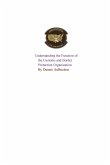The prime challenge of message communication over a transmission media is security. An automated communication scheme which is to be made consistent, needs a strong and robust security mechanisms. The authenticity of any information restson decent encoding system. In symmetric key scheme, an indistinguishable key is desired for encipherment as well as decipherment. On the contrary in asymmetric key encoding, a pair of keys, that is to say a public key and a private key, are utilized for data encipherment as well as decipherment. So, peers of both the keys are significant in all cryptographic system.DNA cryptography, which is derived from the biological activities observed in the nucleotides of a DNA strand, is making its way in the realms of information security. Genetic data are encrypted as an arrangement of nucleotides Adenine (A), Thymine(T), Cytosine (C) and Guanine (G). A suitable genetic (DNA) encoding is employed to intensify the confusion and diffusion in the encryption algorithms. Without the information of the trapdoor, a one-way trapdoor function is "easy" to interpret nevertheless tough to break. It facilitates the authorized users with a tractable problem and simultaneously makes the adversaries face a computationally infeasible solution. This research work introduces a trapdoor function, built on the concept of quantum theory. A qubit or a quantum bit (unit of quantum information) has two quantum polarization states namely vertical and horizontal polarizations.







